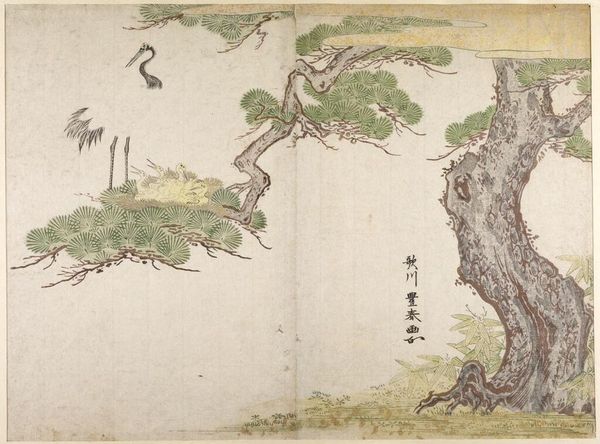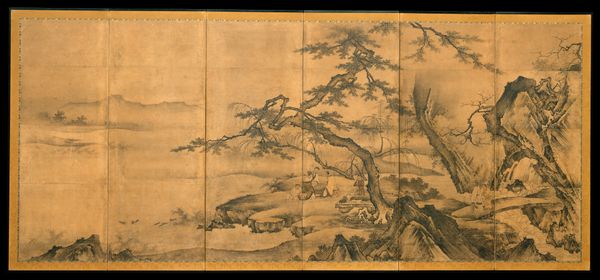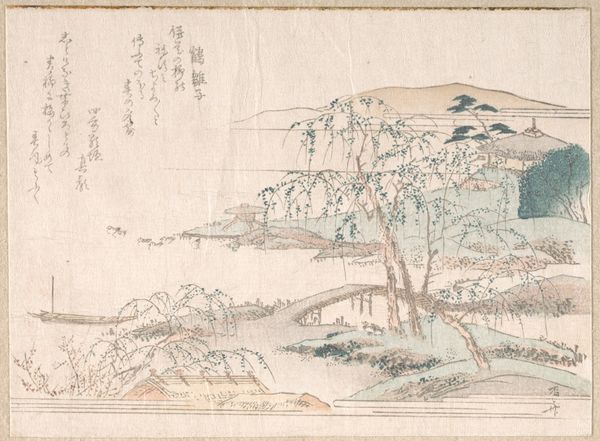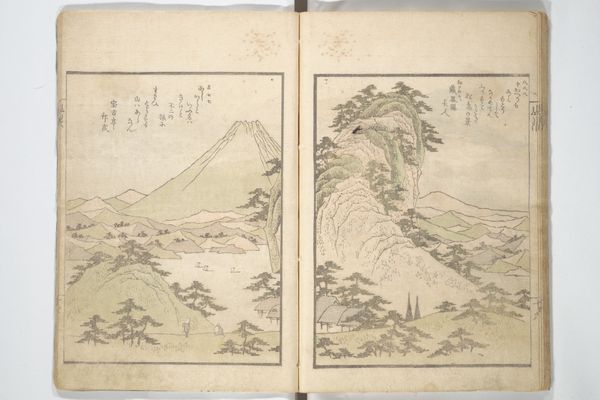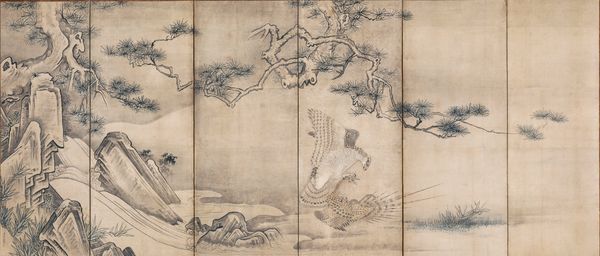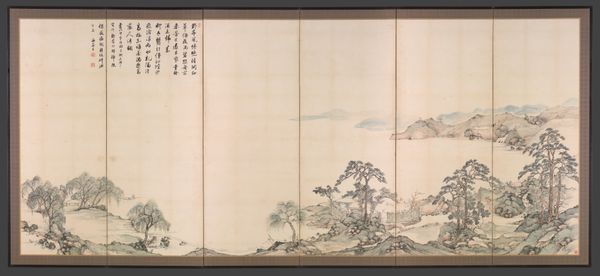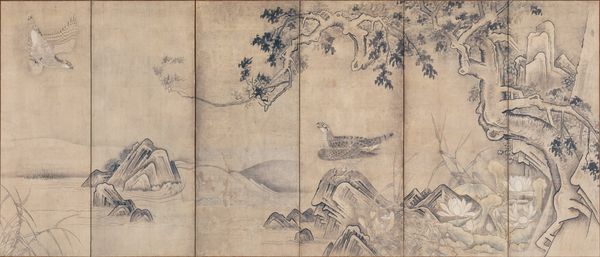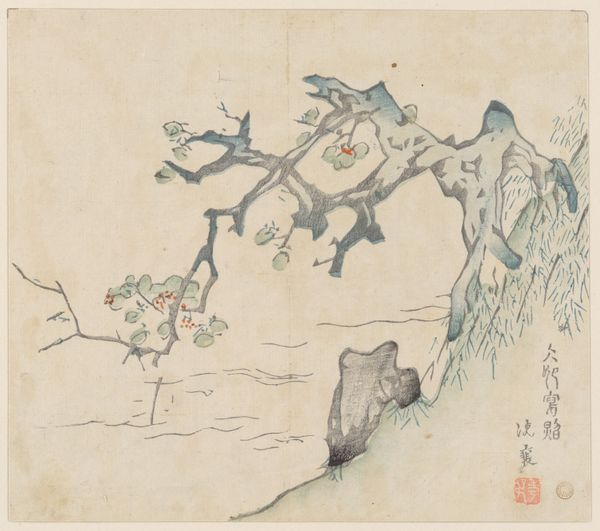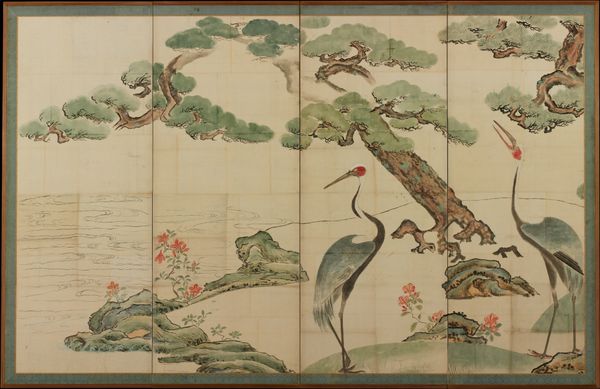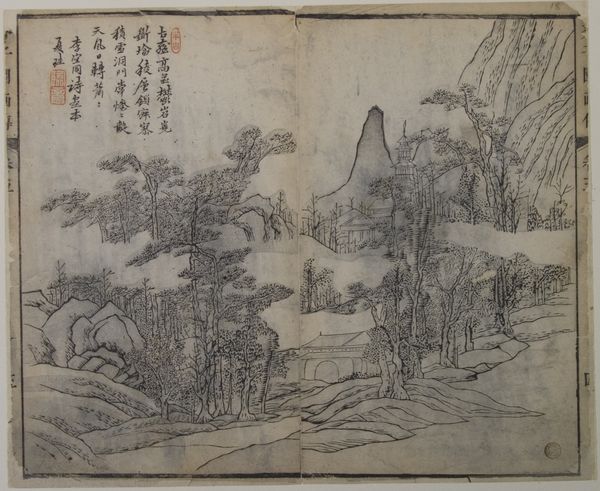
Crane and Their Young in Their Nest in the Branches of a Pine-tree 1780 - 1800
0:00
0:00
painting, print, paper, ink
#
water colours
#
ink painting
#
painting
# print
#
asian-art
#
landscape
#
ukiyo-e
#
paper
#
ink
#
coloured pencil
#
orientalism
Dimensions: Aiban; H. 13 7/8 in. (35.2 cm); W. 9 7/8 in. (25.1 cm)
Copyright: Public Domain
Curator: What strikes me most immediately is the quiet tenderness in this scene, almost as if we are witnessing a sacred domestic moment. Editor: Yes, there's a gentle intimacy. The delicate balance of the composition, the placement of the crane and its young—it's a testament to the artistry. But look at the materials—it's not just the "what," but the "how." Curator: Indeed. What we're seeing is “Crane and Their Young in Their Nest in the Branches of a Pine-tree,” a print made by Utagawa Toyoharu between 1780 and 1800. Its creation employs ink and color on paper. Thinking intersectionally, these depictions were central to constructing notions of East Asia in the West, and played a vital role in global trading networks of aesthetics. Editor: Consider the paper itself, its texture, likely handmade, the sourcing of pigments used to color the inks… this print speaks volumes about production chains, about the socio-economic circumstances which allow such artistry to flourish. Ukiyo-e were essentially the mass-produced images of their time. Curator: The cranes, a traditional symbol of longevity and good fortune, are central. But I wonder if this depiction speaks to broader themes of familial care, the continuity of life, and, more subtly, to gender roles within artistic representation. This scene resonates even now in its appeal to universal desires and values of care and protection. Editor: Absolutely, these images speak of nature, but crafted, curated, commodified. We must recognize that the act of creation isn't separate from the social world. It has a cost, both to people and materials. Thinking of craft this way forces a confrontation with systems of power and economy. Curator: Understanding its cultural context reveals that these prints were part of a broader artistic and social discourse, informing how individuals perceived their own world and other cultures too. I'm struck by how much of what looks simple required generations of refinement in aesthetic appreciation. Editor: Precisely. So while seemingly straightforward, the piece urges us to delve beneath the immediate impression, into the complex ways the image, materiality, production and dissemination functioned within its society, but continues resonating beyond it too. Curator: Thank you for prompting those observations! Editor: My pleasure, it is precisely the synthesis between concept, labor, and cultural significance, after all, that brings such depth to works like these.
Comments
No comments
Be the first to comment and join the conversation on the ultimate creative platform.
